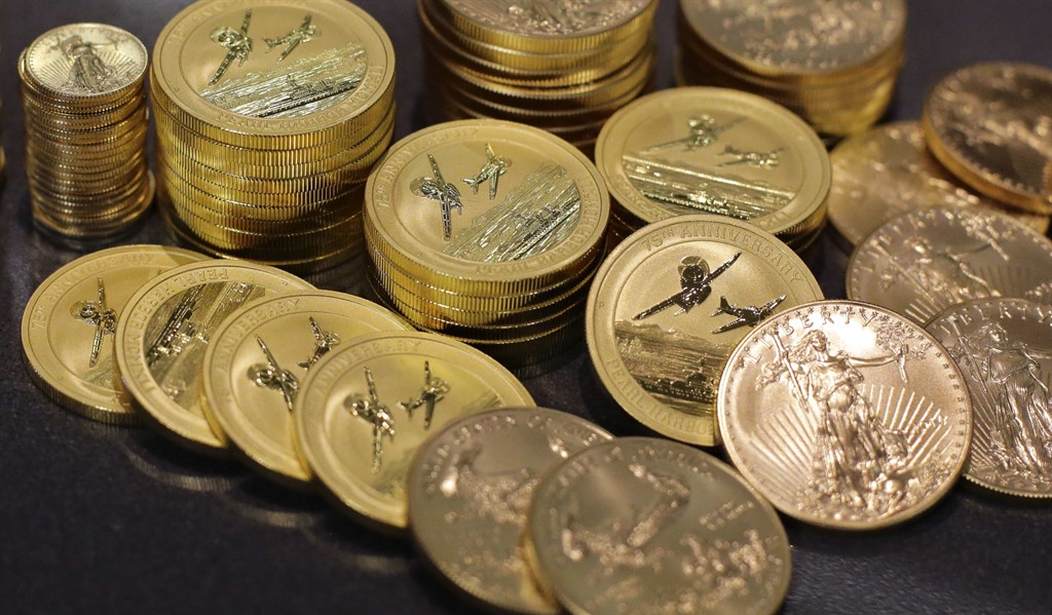After the Flash Crash in gold on June 26 and the Flash Crash in silver on July 6, Wall Street traders are ultra-bearish on the metals. Traders tend to be trend-followers and they see the trend is now down, so they have sold precious metals. The Commitment of Traders report last week showed that the net long positions in gold and silver dropped for the fourth straight week. In reviewing this data, Commerzbank said, “This puts net longs at their lowest levels since February 2016 [for gold] and August 2015 [silver]. Short positions in silver are currently at a record high….In the past, such extreme positioning by speculative financial investors has often sparked a pronounced countermovement in prices.”
The basic theory of “contrarian investing” is that when most big traders line up on one side of the trade, there are few big traders left holding the bag, so a move in the other direction is likely. In this case, the big sellers have nearly all sold their gold and silver, so even a small amount of buying pressure can push the metals back up. For a recent case in point, the previous low position in net-long gold contracts was February 2016, when gold traded below $1,100. Gold promptly shot up to $1,365 by July 2016. The previous low in net-long contracts for silver was August 2015, when silver was under $15 per ounce. The price of silver reached $20 within a year. When selling pressure is exhausted, greater profits are possible.
Recommended
The rationale – I’m tempted to say the ignorance – of the traders is that the Fed might raise interest rates again since last Friday’s jobs report was better than expected, but we have already shown how gold has risen after most of the previous 20 interest rate increases by the Fed, going back to 2004. Pundits also tell us that Europe may start raising rates soon – or at least stop their “quantitative easing,” however they keep going the “easy money” route, adding 60 billion euros a month ($800 billion a year) in new money.
In short, smart investors can use the latest dip in gold and silver to bet on a big bounce back coming soon.
A “Flash Crash” in Stocks and Silver Struck Last Week
Americans first experienced a “Flash Crash” on May 6, 2010, a 36-minute stock market crash of epic proportions. The carnage began at 2:32 pm Eastern time, when the Dow Jones Industrial Index plunged almost 1,000 points (998.5, to be exact) in about 15 minutes, only to recover that loss fairly rapidly, by 3:08 pm. The electronic bid prices for dozens of stocks and exchange-traded funds (ETFs) fell to a penny a share. Investors who had “stop loss orders” or automatic sell orders were wiped out in trading that day.
Wall Street established some safeguards after that event, but not enough to prevent another Flash Crash on August 24, 2015, when prices of many ETFs collapsed, becoming technically worthless for minutes.
Last week, there were two Flash Crashes in one holiday-shortened week. First, on Tuesday morning, while markets were closed for the July 4th holiday, a computer glitch priced three large stocks – Apple, Amazon and Google – at precisely $123.47 per share on all the major electronic quote boards: Google, Bloomberg and Reuters. This represented a 14% drop for Apple, but a huge (86% or more) drop in price for Amazon.com and Google. If this had happened during trading hours, it would have caused a panic.
Just two days later, a Flash Crash in silver took place shortly after 7:00 pm Thursday, a time when trading is very light. A trader apparently sold 5,000 contracts (25 million ounces) at once, then another 5,000-contract sale came through minutes later. At a time when few buyers offered bids, the silver price fell to $14.30 before recovering to $15.40 early Friday morning and $15.62 on Monday’s opening.
Some of these trades could be entered mistakenly, in a “fat finger” trade, meaning that a trader intended to sell 50 or 500 contracts but held down the “zero” button too long and it turns into a 5,000-contract trade. In this case, the first trade may have been a “fat finger” trade and the second trade a panicked response.
A similar Flash Crash in gold took place on June 26, 2017 at 4:01 am (Eastern time), just as the European gold market was opening. Gold plunged $18 in just a minute as 18,149 gold contracts (18,149,000 ounces, worth $2.25 billion) traded in seconds. Normal trading volume is about 2,500 contracts per hour.
This June 26 event may also have been a mistaken (‘fat finger’) trade, as traders are often rewarded for speed rather than good sense. Long-term investors don’t have to worry about these flash crashes, but they can wipe out margined traders.
Gold and Rare Coins as Valuable Diversification Vehicles
Investment advisors often speak of “negative correlation.” In practical terms, that means that a well-protected portfolio must contain investments that “zig” while the global stock markets “zag.” You don’t want all of your investments going down at once, right? Most investors suffered that fate in 2008 and 2009, when all three leading asset classes (stocks, bonds and cash for income) fell at once. That’s why investors need gold to lift a portion of their net worth higher, even while all of their other investments may sink in unison.
In the 1970s, gold quadrupled twice: (1) First, gold rose from $42 to $200 in 1972-74 based on Watergate and President Nixon’s resignation, the Arab Oil Embargo and resulting inflation and a 50% stock market decline. (2) Then gold quadrupled again in the late 1970s based on Carter’s failed foreign policies, an energy crisis, gas lines, double-digit interest rates, 11% unemployment and inflation.
Gold has historically risen sharply when global tensions rise. Some examples include Russia’s late December 1979 invasion of Afghanistan, sending gold up from $450 to $850 in just three weeks. Another dramatic example came after 9/11 in 2001. However, gold’s most dramatic gain came in 2008, when the big financial crisis triggered a global recession. Gold rose $100 in one day (and $160 in two weeks) when Lehman Brothers failed in the middle of September 2008. Gold rose from just $740 on September 11, 2008 to $902 just 12 days later. While other investments were falling, gold shot up. In 2017 gold is up 9%, which is better than the Dow, S&P and CRB Commodity Indexes.
Numismatic coins are the most concentrated forms of wealth – so that more value can be saved in a smaller space or easily transported. Over time, quality numismatic coins generally grow faster than gold bullion in price, according to a basket of 3000 rare coins (the PCGS® 3000 Index) that far outperformed gold bullion from 1970-2017.

























Join the conversation as a VIP Member